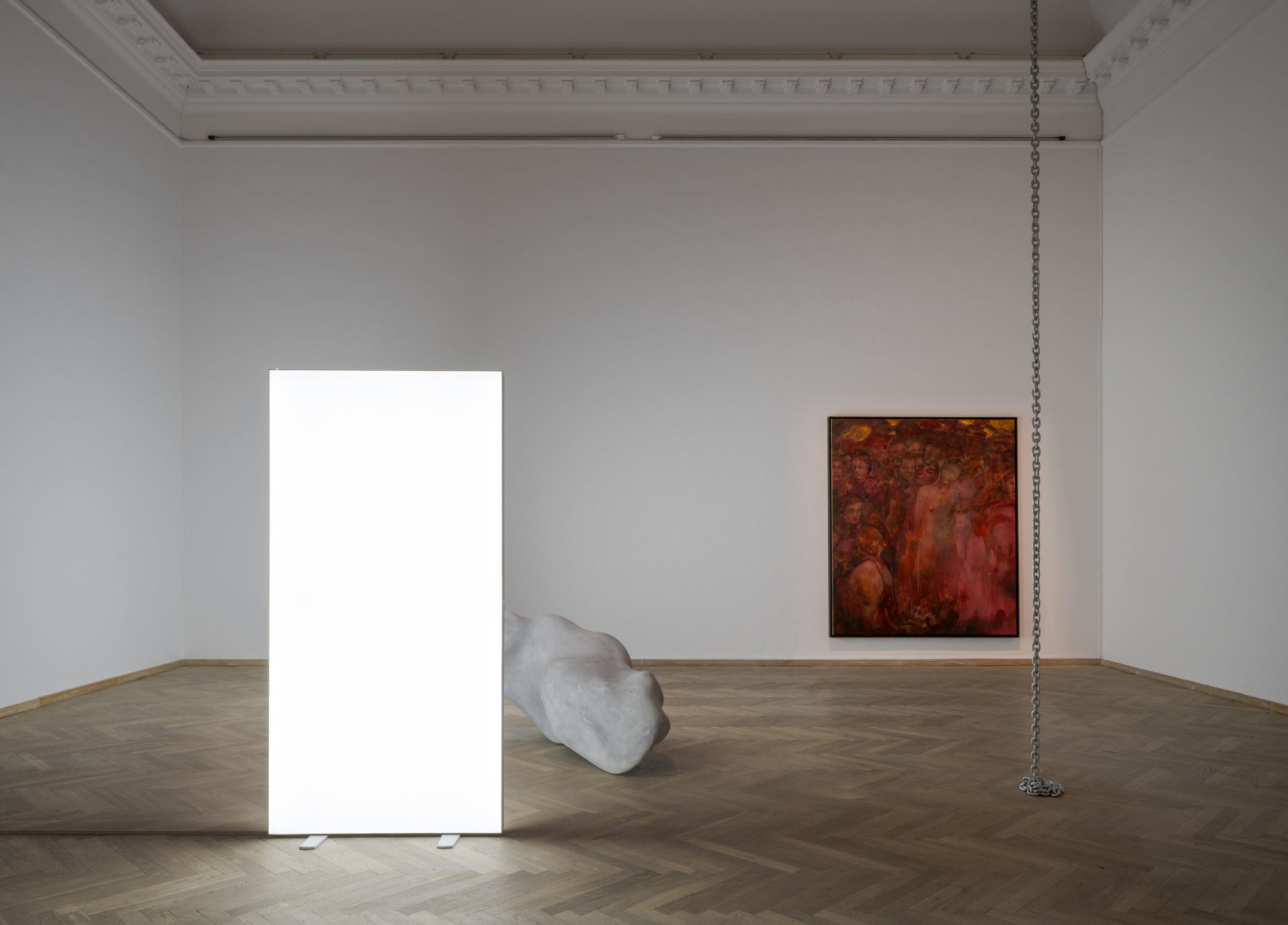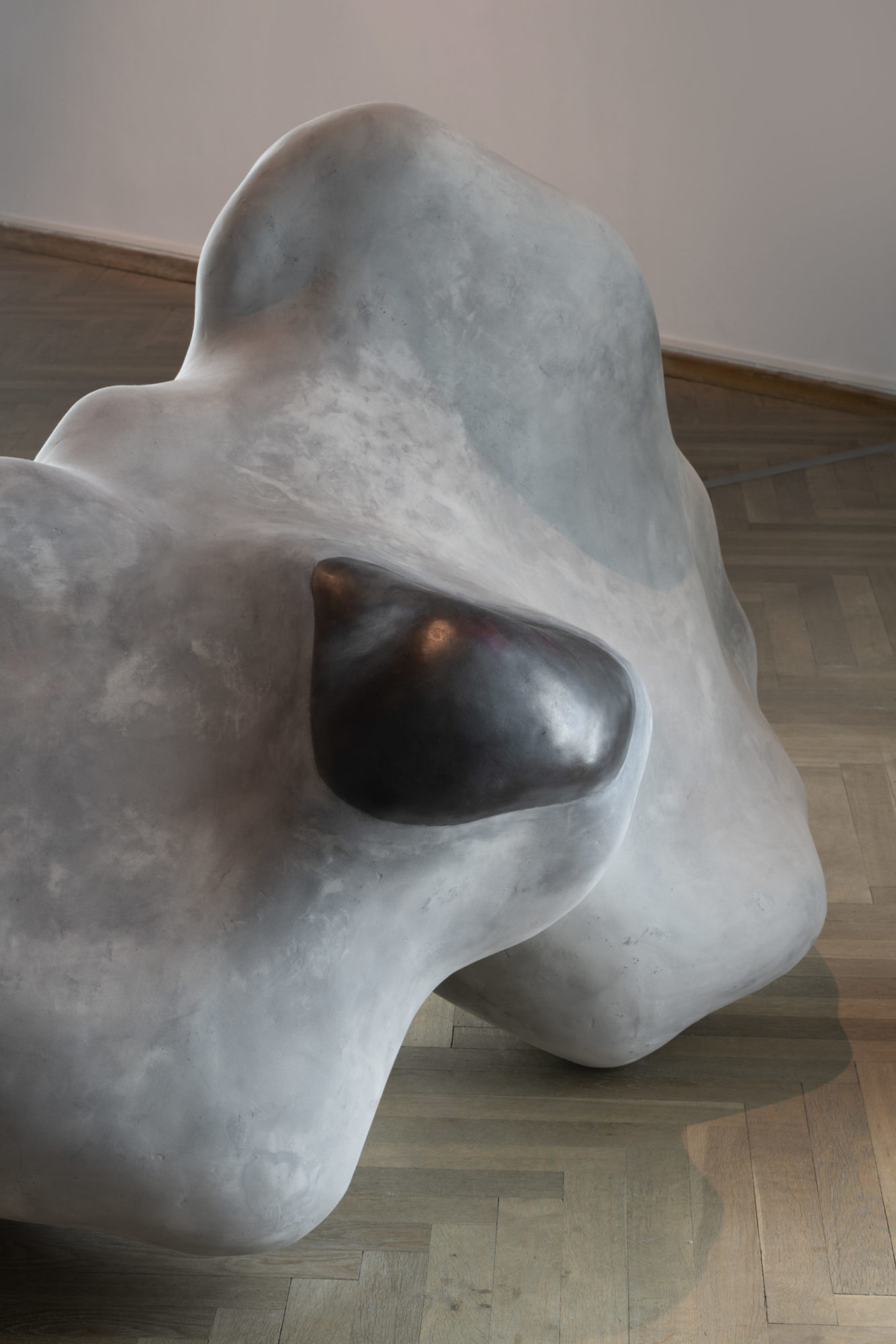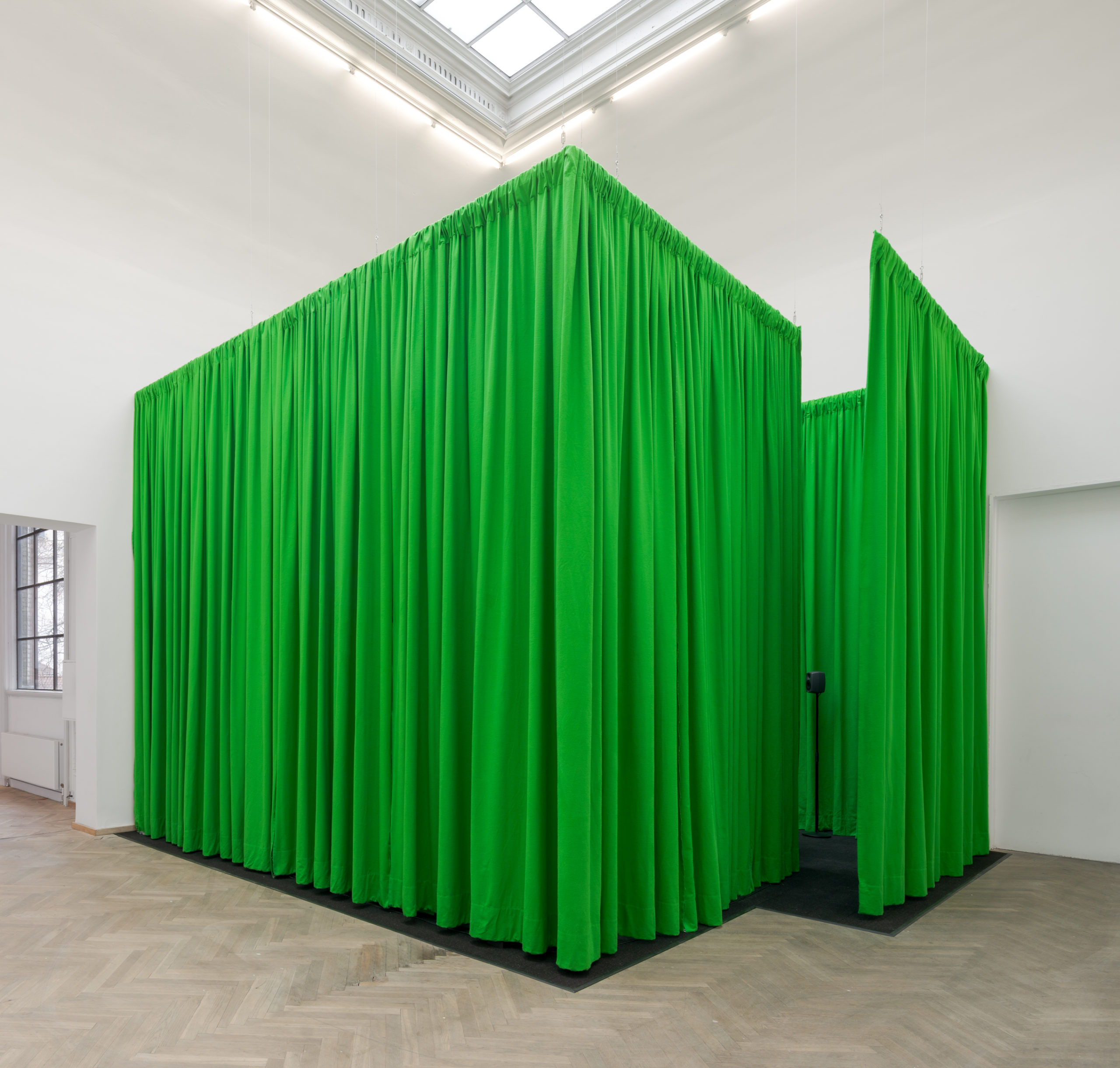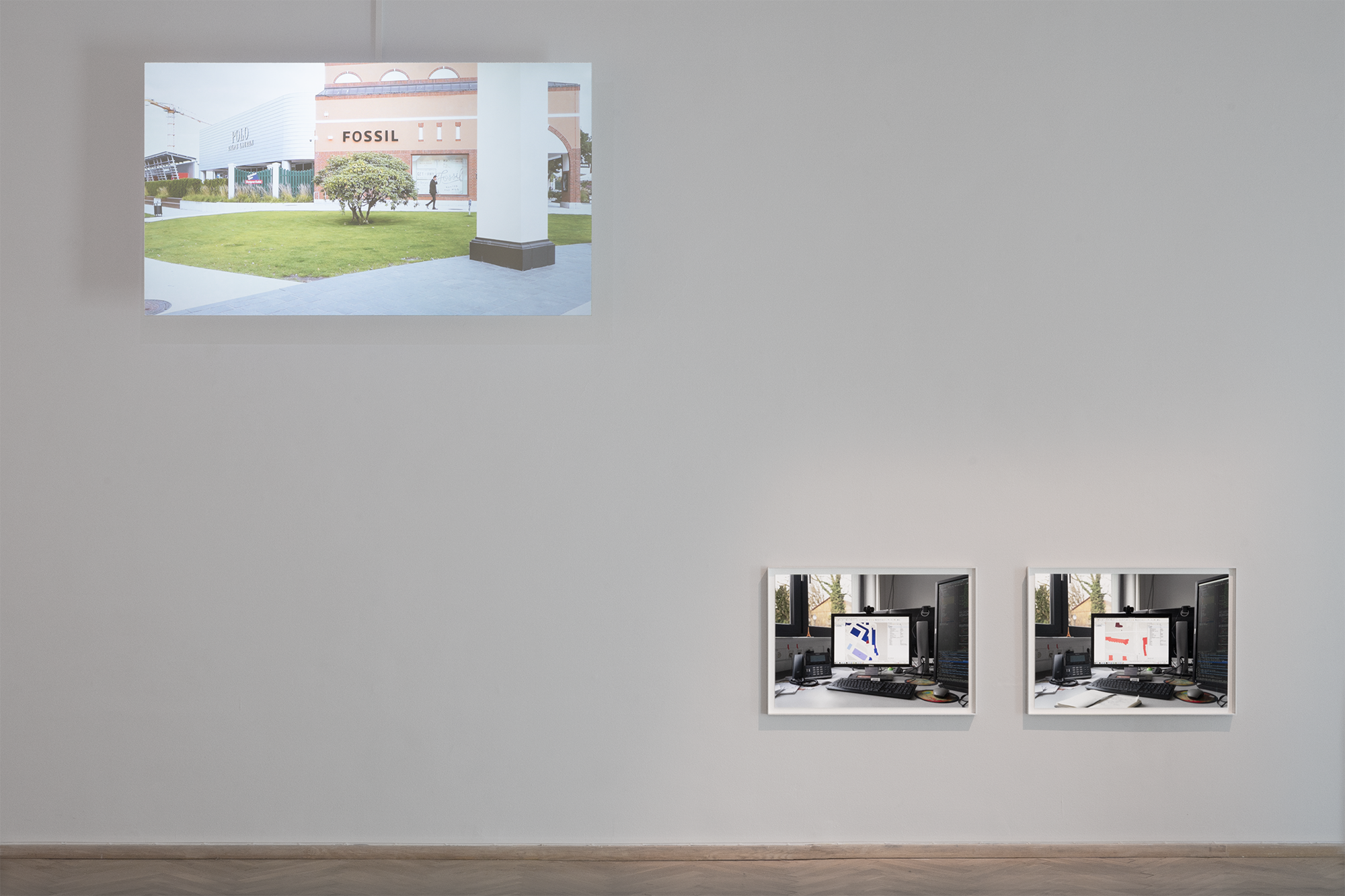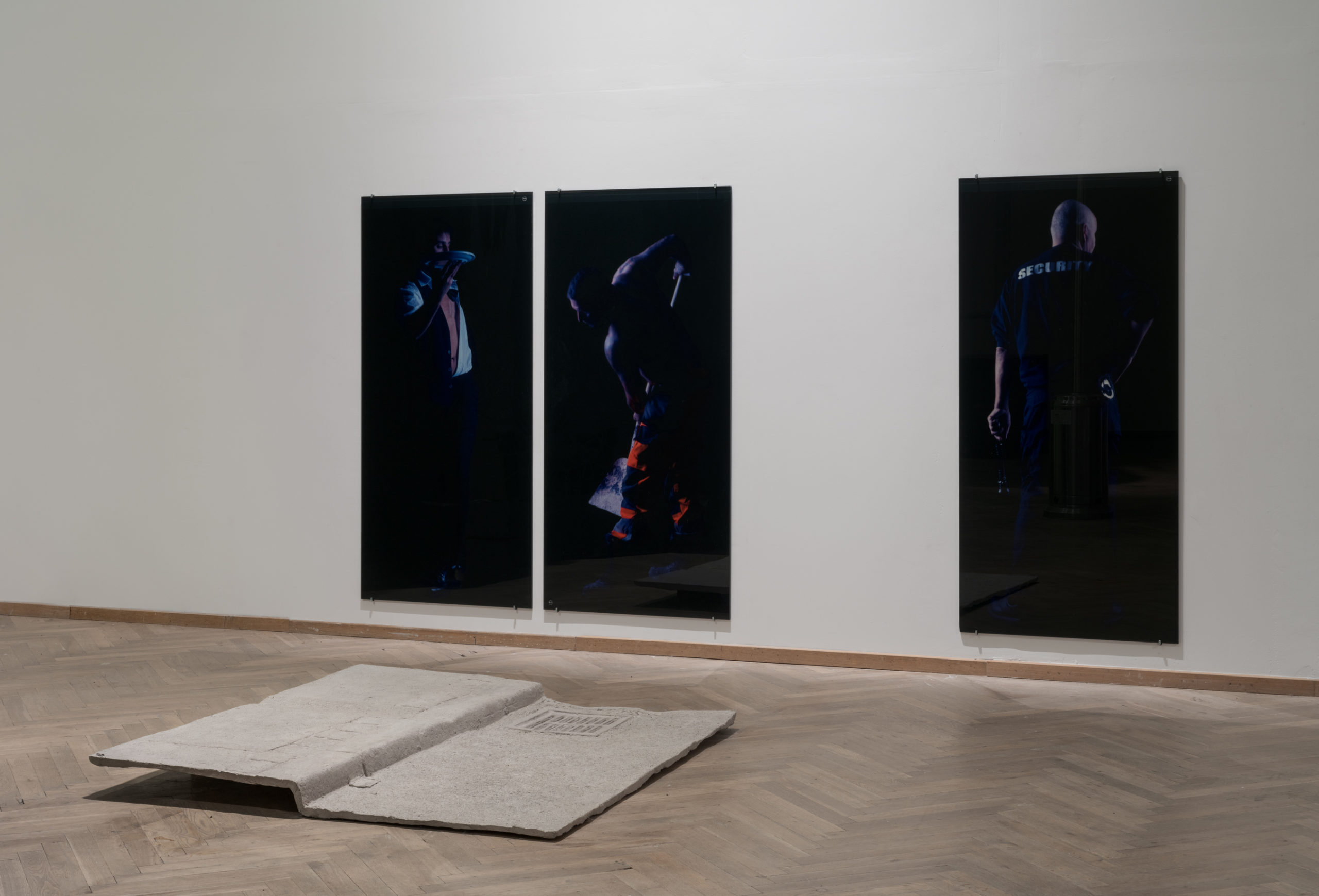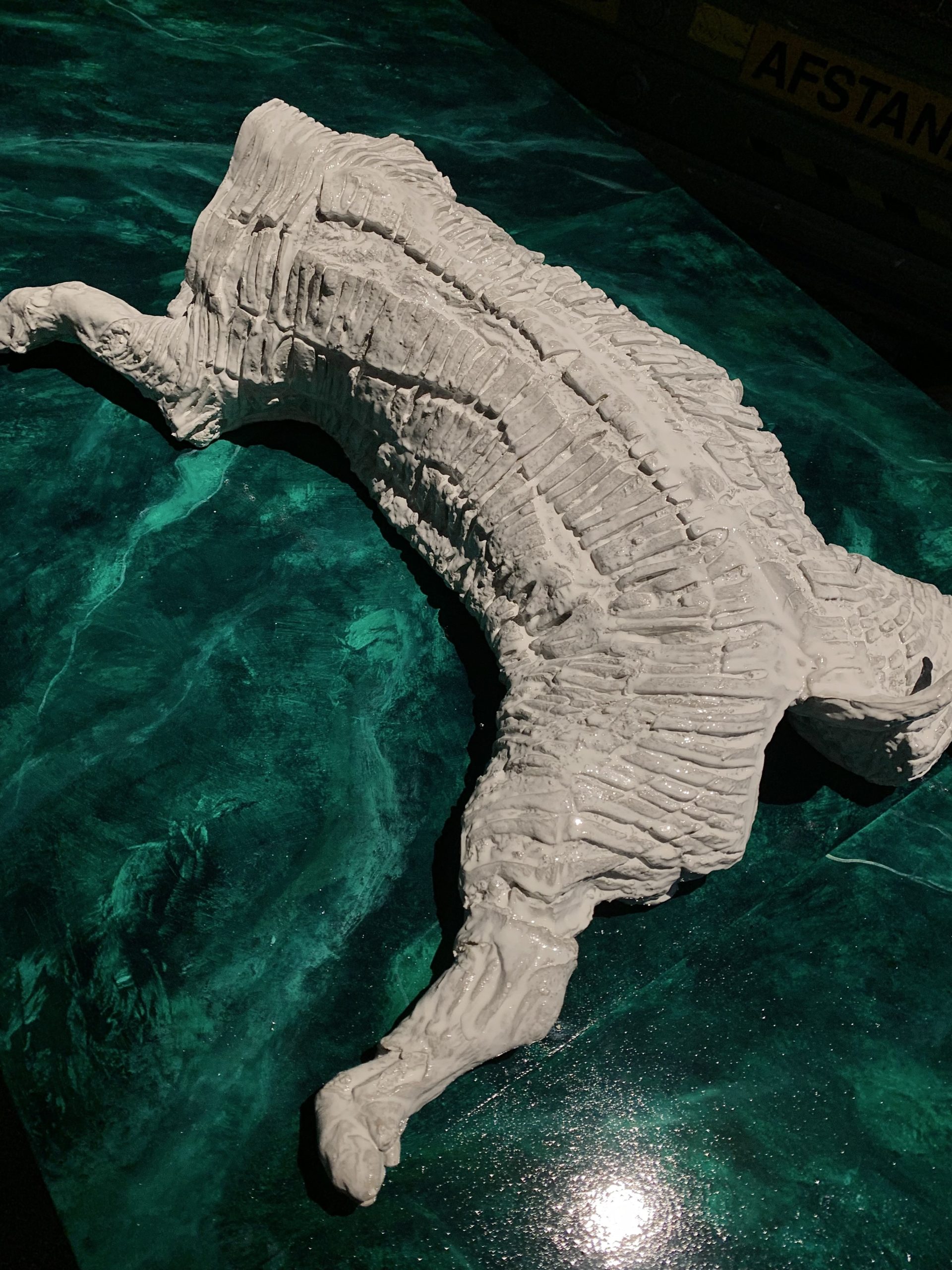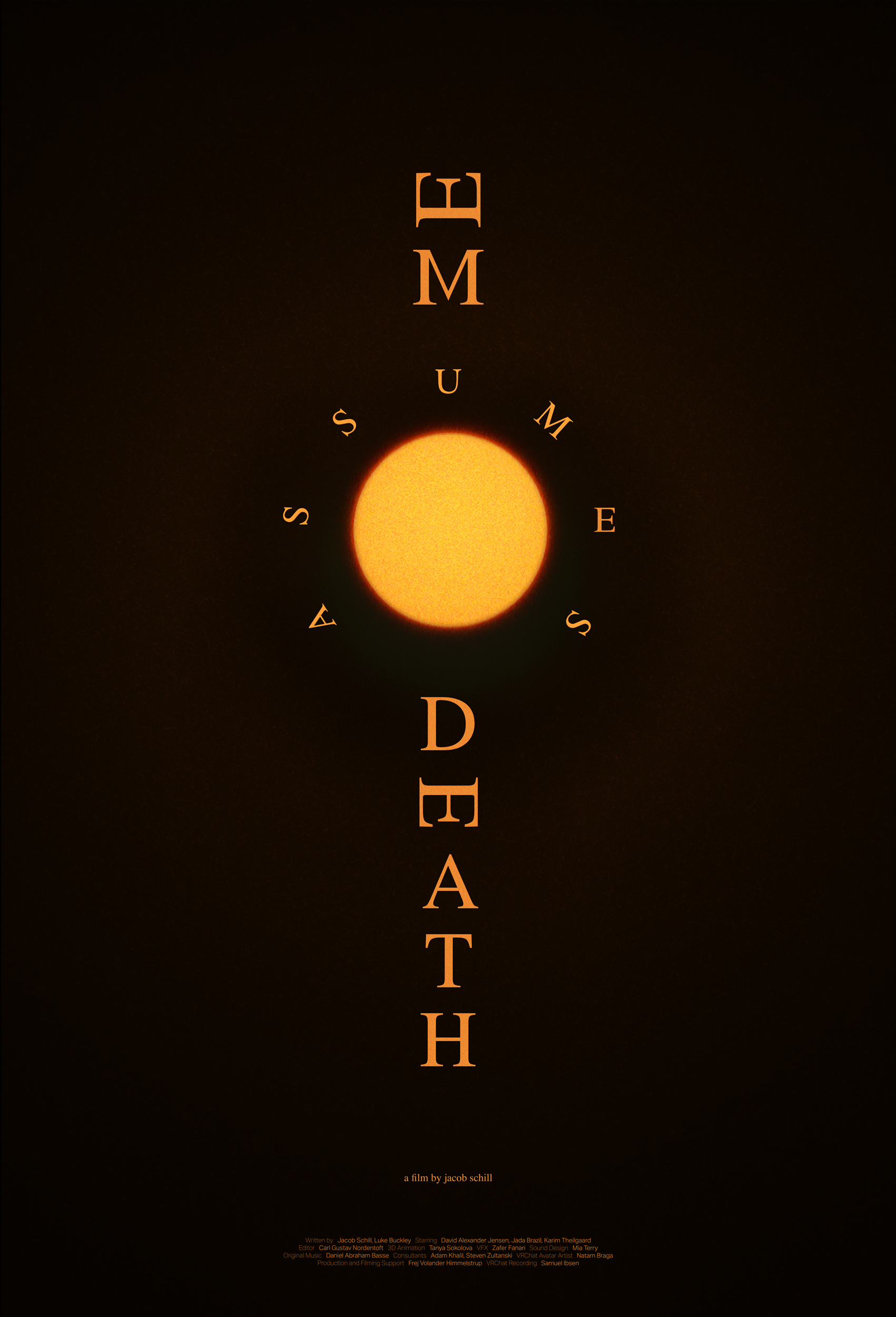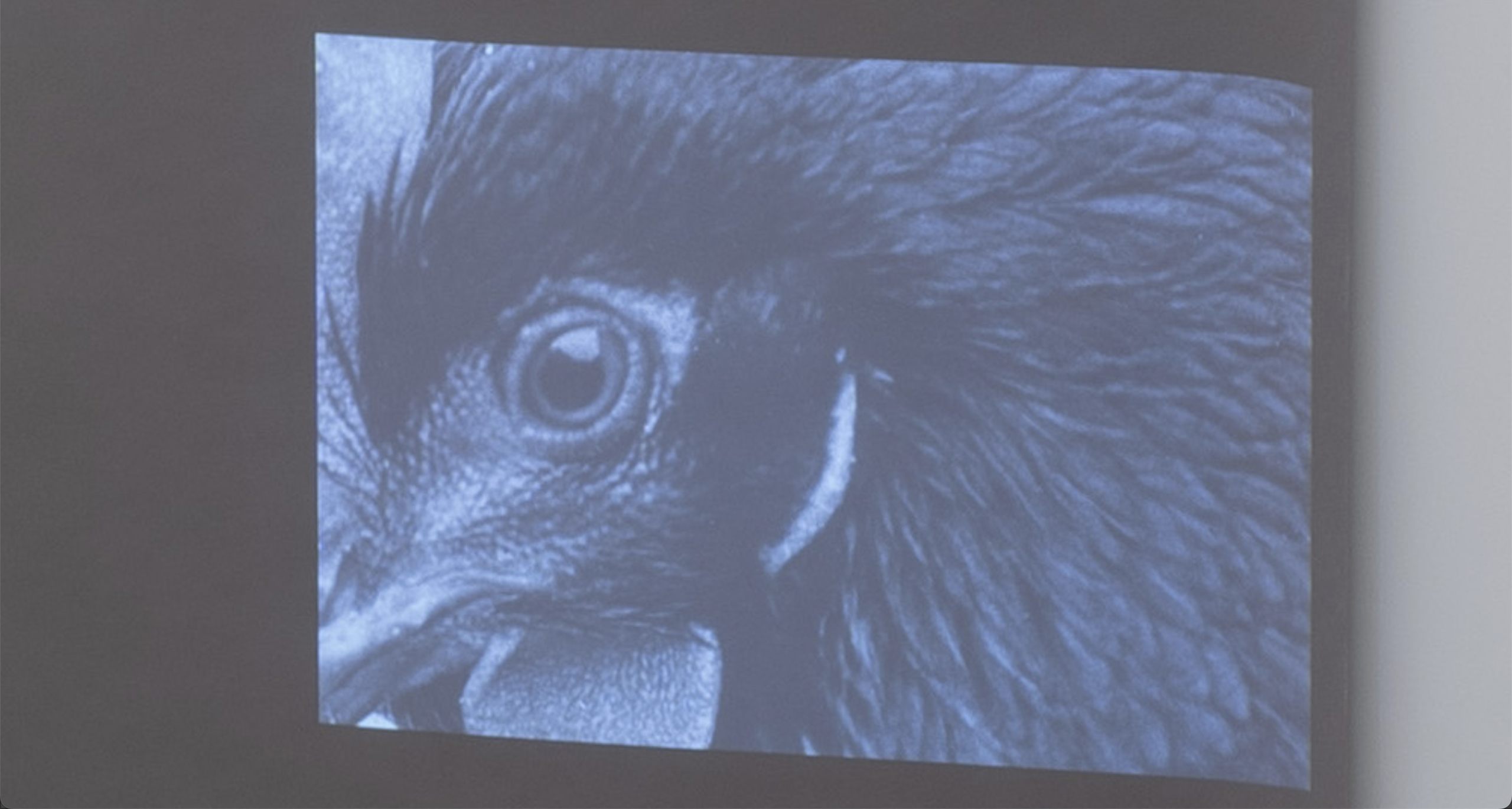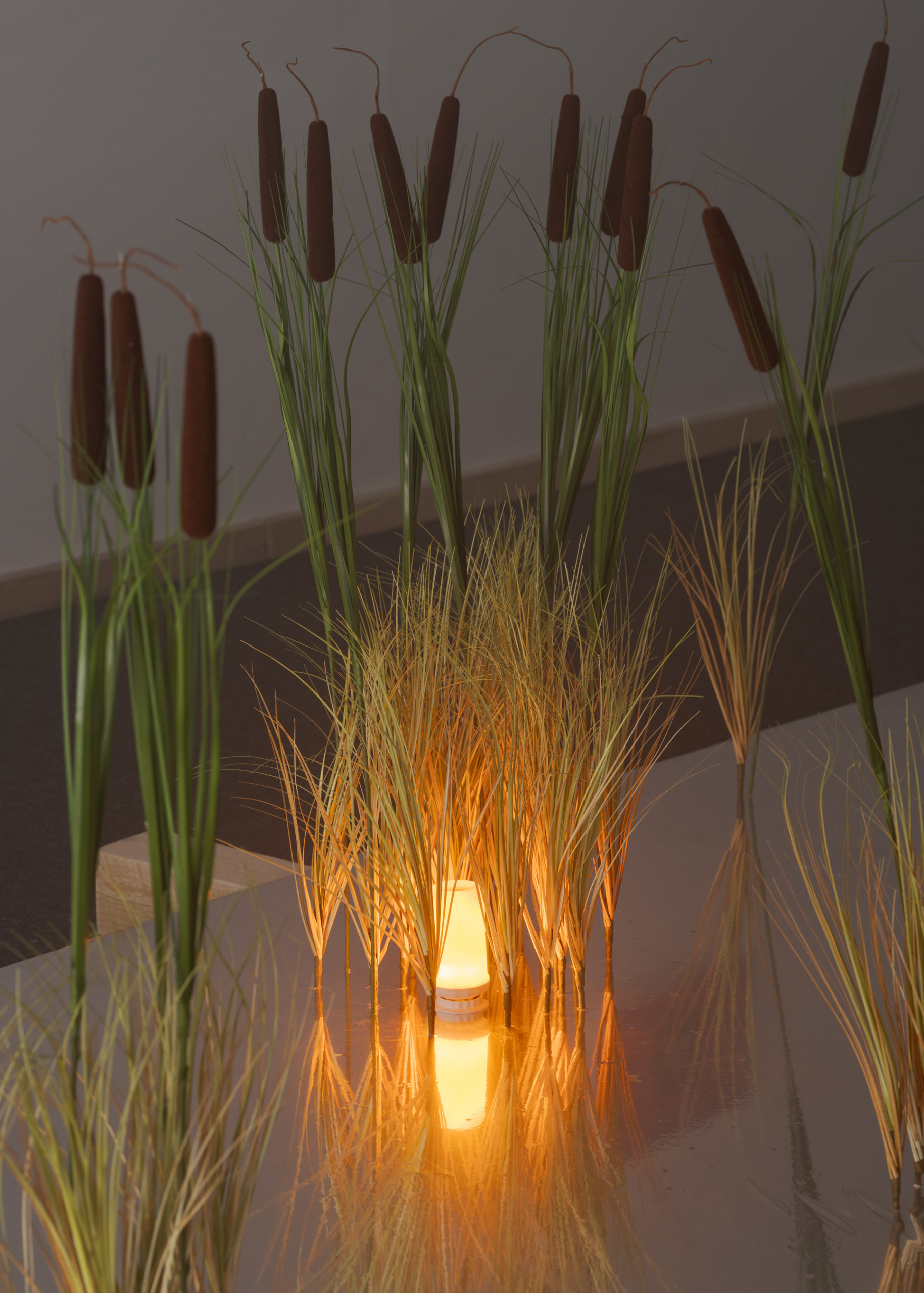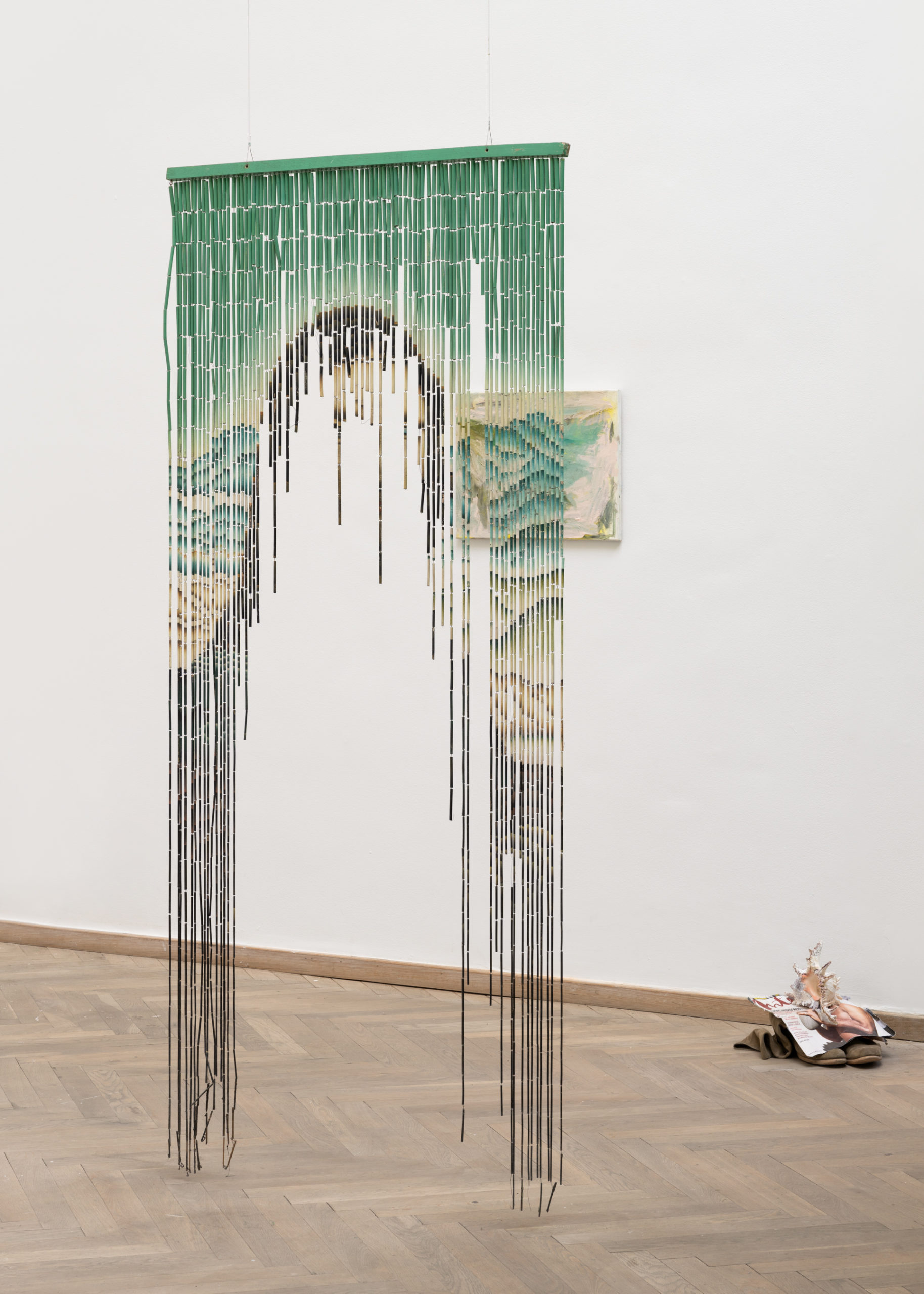
Hedvig Greiffenberg, ] [ ] ] (2024), polystyrene, fiber concrete, wax, graphite, pigment, LED display panels, chain, various materials.
“With a deep engagement with poetry and material semiotics, Hedvig Greiffenberg’s practice explores the edges of knowability through sculpture, text, and installation. Her works stage conjunctions between the synthetic and organic, centering the changeability and permeability of materials by shaping and transposing matter from one form to another, generating new openings in the knowable world. Greiffenberg’s material production is another kind of poetry: letting things touch, creating new worlds in an encounter, and exploring the interrelation between material and meaning in compositions that vibrate between creation, fragility, and annihilation. Language here holds the world like a large meshed net, creating meaning and epistemological regimes, it is part of the human compulsion to read and decode, to frame and build the world so that it makes sense, and plays a central role in the work although words are rarely present.
The central figure in the installation ] [ ] ] is an enormous biomorphic form, a fusion of the biological, geological, and artificial. Though reminiscent of artists such as Henry Moore or Barbara Hepworth, this rotund sculpture resists anthropomorphism or narrative, instead addressing the viewer as a marker for the unfamiliar, an ungraspable mass, an empty signifier. On its stone-like raw surface can be found subtle polychromatic marks that serve as traces of the labor of its material production and as faint allusions to information below the surface. The “readability” of the sculpture by both the eye and the body is further disrupted through the inclusion of a pair of self-standing LED display screens that block certain perspectives, forcing the audience to view the object anew from different positions. They function as a sort of ‘bracket’ for the work, framing and isolating the object, while also fragmenting and disintegrating its spatial reality. Rather than providing information or images, the blank screens illuminate the object, emphasizing its shape and shadows, yet they also mark a threshold, a frontier, a boundary for the viewer’s body. Here, the artist calls attention to the double function and allusions of the screen itself, which has gone from being a mobile barrier that closes off space to functioning as something that opens up new worlds, a container full of potential information to get lost in. The linkages between the unknown and concrete are literalized through the inclusion of a maritime anchor chain in the installation hanging heavily from the ceiling to the gallery floors. The chain as a readymade object signifies the joining together of separate entities as it moors the ship to the seabed, but at the same time, it is also a marker of a spatial distance. Greiffenberg’s installation juxtaposes the knowability of blank readymade tools with the inherent unknowability of the big sculpture, lingering in a state of liminality where language fails and transformations occur through shifts of perception, cognition, and encounter. The unutterable title of the work refers to the brackets used in Anne Carson’s English translation of Sappho’s poems, where the square brackets mark places within the text where words or sentences are either missing or too unreadable to make a conclusive translation.”
– Post Brothers
